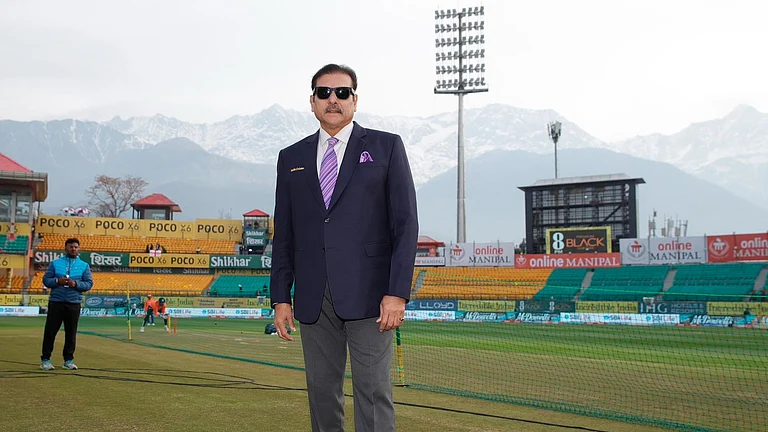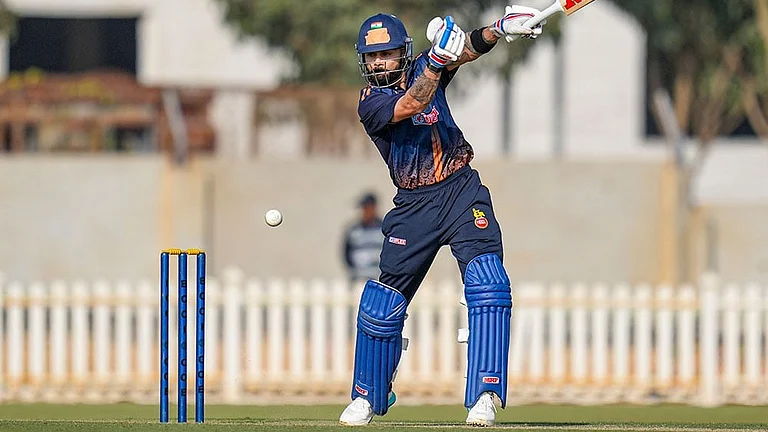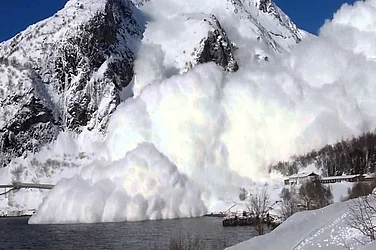Two weeks after India scripted history by becoming the first country to land a spacecraft on the South Pole of the Moon, India on Saturday embarked on an ambitious mission to study the Sun with the Aditya-L1 mission.
The Polar Satellite Launch Vehicle (PSLV) blasted off into space at 11:50 am from Satish Dhawan Space Centre, Sriharikota, Andhra Pradesh. Aditya-L1 spacecraft separated from PSLV after a 63-minutes flight. The launch sequence was completed in another 10 minutes, marking the beginning of the next phase of Aditya-L1’s mission — the four-month-long journey towards the Sun.
Once Aditya-L1 reaches the Lagrange Point-1 (L1), it will study the Sun for five years. The Lagrange Points are positions in space where objects stay stationary. There, the gravitational pull of two masses act such that the fuel used by the spacecraft to remain stationary is reduced.
While the landing of Chandrayaan-3 marked the conclusion of a 15-year journey that began with Chandrayaan-1 in 2008, Aditya-L1 ushers in the next phase of the Indian space programme. Now, after being focussed on the usage of space for Earth-based applications such as mapping, communications, and disaster management for decades, the Indian Space Research Organisation (ISRO) has finally embarked on missions that are primarily science-oriented.
While India was relatively late to launching purely scientific missions to understand the space, as it launched AstroSat only in 2015, India has finally caught up, says astrophysicist Prof. Somak Raychaudhury, adding that the AstroSat was a mission at par with foreign space agencies like the US National Aeronautics and Space Administration (NASA), European Space Agency (ESA), and Japan Aerospace Exploration Agency (JEXA).
For decades, the Indian space programme was geared towards applications on Earth for the public good, such as mapping, communications, weather forecast, disaster management, etc — as envisioned by space pioneer Vikram Sarabhai. It was only after the 1990s that the public good-based approach began to change in favour of a science-based approach where ISRO began working on missions to unravel celestial mysteries.
“AstroSat was our first purely scientific mission. It is still one of the best telescopes in space. It has given great opportunities to Indian scientists to compete with the rest of the world. Around 200 papers have been published on data from the mission. We have students from Mizoram University publishing papers comparable to someone from the United States. While there are aspects like space weather research that have applications for Earth, the Aditya-L1 is largely a science-driven mission. ISRO is very serious about science-driven missions,” says Raychaudhury, Vice Chancellor, Ashoka University.
What’s special about Aditya-L1?
Once it reaches the Lagrange Point-1 (L1), Aditya-L1 would be India’s first space-based observatory to study the Sun.
The Aditya-L1 spacecraft is carrying seven payloads that would study the corona of the Sun —the outermost region of the Sun's atmosphere— along with solar winds and its magnetic fields among other aspects.
Raychaudhury, who was previously the Director of Inter-University Centre for Astronomy and Astrophysics (IUCAA), Pune, tells Outlook that one area of focus of Aditya-L1 would be to understand space weather, which also affects Earth.
He says, “Aditya is on a big science mission. It has some Earth-related aspects, but it is largely a purely science-driven mission to study the Sun and its corona and the relation between them. There is a link to space weather issue, which affects the satellites around the Earth and various Earth-bound things. It’s going to study charged particles that come out of the Sun all the time. These particles also hit the Earth. When they hit the Earth, they often hit the satellites around Earth which are routinely disrupted or destroyed. There is an attempt to understand these ejections that come towards the Earth and affects the space weather.”
One key payload of Aditya-L1 is the Solar Ultraviolet Imaging Telescope (SUIT), which IUCAA Pune developed when Raychaudhary was its director.
“The SUIT payload would study the Sun’s disc —surface— and ultraviolet imaging of the star. In order to study it, we have to be in deep space as such observations cannot be made from Earth as UV rays are stopped by the ozone layer of Earth. At the same time, another key instrument named Visible Emission Line Coronagraph (VELC) would study the corona of the Sun, its temperature, and pressure status,” says Raychaudhury, explaining that while the Sun’s surface is around 5,500*C, the temperature of the corona is around 2 million*C.
Raychaudhury further says, “Since we are studying both the surface and the corona at the same time, we can link things happening on the surface with things happening in the corona and this is the uniqueness of this mission. These are two very instruments that we have built. The ultraviolet imager (SUIT) is better than anything that has ever been sent in space.”
What’s next for the Indian space programme?
The Indian space programme has finally caught up with the times and, with the coming up of the Indian Space Policy 2023 (ISP-23), the Indian Space Research Organisation (ISRO) is set to enter the league of major space powers and also take the private players along with it — though there is a long road ahead at least for the private players.
While the Aditya-L1 mission has already been launched, the Gaganyaan mission too is long in the works and could be launched sometime next year. Then, there is the India-Japan Lunar Polar Exploratory Mission that takes the legacy of the Chandrayaan programme further. The joint mission would look for water on the Moon's polar regions. In 2009, a US-made instrument aboard Chandrayaan-1 confirmed the presence of ice on Moon’s South Pole.
One key aspect of this new phase of the Indian space programme is the commitment to pure scientific research. In the past, ISRO has received criticism that it was focussed more on engineering and commercial launches instead of pure science and even scientific missions like Chandrayaan-3 came under criticism. The mission that’s been seen as the highest point of the Indian space programme so far has been criticised in some quarters as being too short — its span was just 14-days that’s ending on Sunday evening. While astrophysicist Raychaudhury says that the ISRO is “definitely very serious about purely scientific missions”, he does not agree with the criticism of Chandrayaan-3 and other missions.
Raychaudhury tells Outlook, “It has been highlighted that the Russian Luna-25 was to work for one year and Chandrayaan-3 would work for only 14 days, but the Russian mission crashed whereas the Indian spacecraft landed on the Moon. The Russian spacecraft was going as fast as it could and Chandrayaan-3 was going steadily. The slow and steady approach won in the end. Once night sets in on the Moon tomorrow, temperature would drop too low that would cool the lander and rover. India does not have the technology to keep it warm during the night like the United States and Russia do but ISRO is working on it and it will come.”
Earlier, after the landing of Chandrayaan-3 on Moon’s South Pole, Raychaudhury termed the moment as the “crowning achievement” for all Indians and said it would pave the way for much more ambitious missions.
“What sets it apart is that we have become the first nation to land on the Far Side of the Moon, demonstrating our prowess in space engineering, ability to innovate and scientific rigour. Chandrayaan-3 is the culmination of decades of relentless pursuit of excellence by our scientists, and at the same time it is a stepping stone for our country’s ambitious space exploration programmes,” said Raychaudhury.
The private sector and academia in space programme
One of the most exciting elements of the new age of Indian spacefaring is the potential for the rise of the private sector. The idea is that the new phase would not just be led by the government but is also likely to have a visible and proactive private component.
“ISRO has shown willingness to transfer its technology to the private sector. There are of course conditions to such transfers. The ISP-23 also makes way for private players to develop launch vehicles for small satellites. This way, the commercial launches that ISRO’s commercial arm does would no longer be its exclusive domain as the private sector would also compete — at least for small satellites,” said Pranav R Satyanath, Research Associate, Council for Strategic and Defense Research (CSDR) to Outlook earlier.
Satyanath clarified that ‘heavier’ launches would continue to be the domain of ISRO for the foreseeable future as nothing with the private sector now or in the near future would match ISRO’s Polar Satellite Launch Vehicles (PSLVs) and Geosynchronous Satellite Launch Vehicles (GSLVs).
Astrophysicist Raychaudhury says that while India is a “very minor player” in the global industry at the moment, it could change.
He says, “The Indian Space Policy-2023 opens the space sector for private players. It opens the space for both big players and startups.”
At the same time, ISRO is very serious about purely scientific missions and is also working on missions to study other planets and their atmosphere, says Raychaudhury.
Some exciting projects are already in progress far from the limelight that Chandrayaan-3 has generated. In Maharashtra’s Hingol, Laser Interferometer Gravitational-Wave Observatory (LIGO) is being built. There are only two such observatories in the United States. India is already a member of the ETER which is working on nuclear fusion —a potentially limitless source of clean energy— and around 1,000 Indian personnel are working on the project in France.
“Much of it has happened in the past 10 years alone. The integration of academia and the space industry is ongoing. If ISRO can instil industrial linkages and infuse expertise, it can make a mark for itself in the global space industry,” says Raychaudhury


























